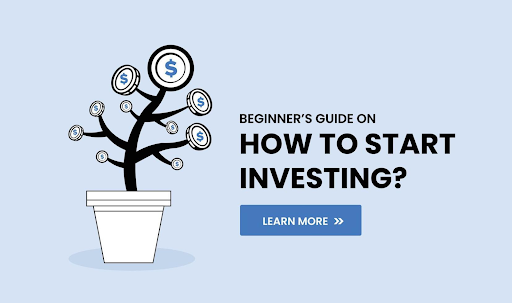For new investors in the U.S., navigating the stock market can feel daunting. The idea of picking individual stocks, following company news, and timing market movements can be overwhelming. This is where index funds for beginners shine, offering a straightforward, low-cost, and effective way to participate in the market’s long-term growth.
Instead of trying to “beat the market,” index funds aim to mirror it, providing a powerful and accessible entry point into basic investing for beginners.
What is an Index Fund?
At its core, an index fund is a type of investment fund (either a mutual fund or an Exchange-Traded Fund, or ETF) that is designed to track the performance of a specific market index. A market index is simply a hypothetical basket of securities (like stocks or bonds) that represents a particular segment of the market or economy.
Think of it this way:
- The S&P 500 Index: This is one of the most well-known U.S. market indexes. It represents 500 of the largest publicly traded companies in the United States.
- An S&P 500 Index Fund: This fund holds shares in all (or a representative sample) of those 500 companies, in roughly the same proportions as they appear in the S&P 500 index. When the S&P 500 index goes up, the index fund aims to go up by a similar amount, and vice versa.
Crucially, index funds are passively managed. This means there isn’t a team of high-paid analysts constantly buying and selling stocks trying to pick “winners.” Instead, the fund simply buys what’s in the index and adjusts its holdings only when the index itself changes (e.g., when a company is added or removed from the S&P 500). This passive approach is a key reason for their appeal.
How Index Funds Work for Beginners
Getting started with index funds is surprisingly simple:

- Choose a Brokerage or Platform: You’ll need an investment account with an online brokerage (like Fidelity, Charles Schwab, Vanguard, or Merrill Edge) or a robo-advisor (like Betterment or Wealthfront). Many of these platforms offer $0 account minimums and commission-free trading on ETFs.
- Select Your Index Fund(s): For beginners, popular choices include:
- Total U.S. Stock Market Index Fund: This provides exposure to thousands of U.S. companies, from large to small. Examples include Vanguard Total Stock Market Index Fund ETF (VTI) or Schwab Total Stock Market Index Fund (SWTSX).
- S&P 500 Index Fund: Focuses on the 500 largest U.S. companies. Popular options include Vanguard S&P 500 ETF (VOO), iShares Core S&P 500 ETF (IVV), or Fidelity 500 Index Fund (FXAIX).
- Total International Stock Market Index Fund: Provides diversification outside the U.S. market.
- Total U.S. Bond Market Index Fund: Adds stability and income to a portfolio.
- Invest Consistently: Set up automatic investments from your bank account into your chosen index fund(s). This strategy, known as “dollar-cost averaging,” helps reduce risk by investing a fixed amount regularly, regardless of market highs or lows.
The Powerful Benefits of Index Funds for U.S. Beginners
Index funds have gained immense popularity for good reason, especially for those new to investing:

- Instant Diversification: With a single purchase, you’re investing in dozens, hundreds, or even thousands of companies. This significantly reduces the risk associated with any one company performing poorly. For instance, an S&P 500 index fund gives you a piece of roughly 500 companies across various industries.
- Low Costs (Low Expense Ratios): Because they are passively managed, index funds don’t incur the high research and management costs of actively managed funds. This leads to significantly lower fees, known as expense ratios. While an actively managed fund might charge 0.50% to 1.50% or more annually, many broad market index funds charge as little as 0.03% to 0.15% (meaning $3 to $15 per year for every $10,000 invested). This difference compounds over time, leading to substantially higher returns for you.
- Strong Historical Performance: Studies, including those championed by legendary investor John Bogle (founder of Vanguard), have shown that the vast majority of actively managed funds fail to consistently beat their benchmark indexes over the long term, especially after accounting for higher fees. Index funds, by simply tracking the market, often outperform actively managed funds in the long run.
- Simplicity and Low Maintenance: Once you’ve chosen your fund(s), there’s little ongoing effort required. The fund manager handles the rebalancing and adjustments needed to track the index. This “set it and forget it” approach is perfect for busy beginners.
- Tax Efficiency: Index funds typically have lower “turnover” (fewer buying and selling transactions) compared to actively managed funds. This results in fewer taxable capital gains distributions to you, potentially leading to lower tax bills in taxable brokerage accounts.
- Transparency: You always know exactly what you own, as the fund’s holdings directly reflect the underlying index.
Types of Index Funds to Consider
While the S&P 500 is a popular start, here are other common types of index funds for beginners to consider for diversification:
- Total Stock Market Index Funds: Track the entire U.S. stock market (large, mid, and small companies).
- International Stock Index Funds: Provide exposure to companies outside the U.S., offering global diversification.
- Bond Index Funds: Invest in a collection of bonds, providing stability and income, which can be useful as you get closer to your financial goals.
- Sector-Specific Index Funds: Focus on particular industries (e.g., technology, healthcare), offering more targeted exposure but also higher risk. (Generally, broad market funds are better for beginners).
Conclusion
For beginners in the U.S. eager to start basic investing, index funds represent an incredibly powerful and accessible solution. They offer a winning combination of instant diversification, remarkably low costs, and a strong track record of long-term performance.
By investing in index funds, you’re not trying to pick winners or outsmart the market; you’re simply aiming to capture the market’s overall growth. This passive, hands-off approach takes the complexity and emotion out of investing, allowing you to consistently build wealth over decades. Start with a broad-market index fund, invest regularly, and let the magic of compounding work for you. It’s one of the smartest and simplest ways to build a secure financial future.










